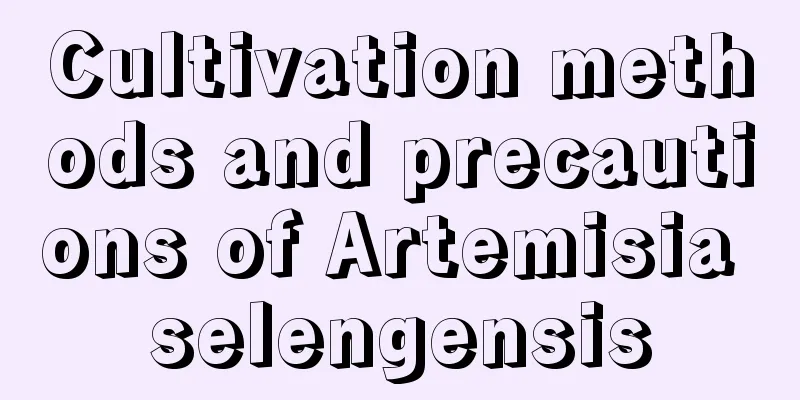Is geranium suitable for growing at home? (Cultivation methods and precautions for potted geraniums)

Can I grow geraniums at home?Geranium has a beautiful plant shape and can be grown indoors for viewing . In addition, geranium itself is non-toxic , so you can grow it at home with confidence. Of course, for people with allergies, its pollen can easily cause allergic reactions on allergic skin, so avoid placing geraniums indoors. However, geranium is an extremely light-loving plant and is not suitable for long-term maintenance in an indoor environment that lacks light and ventilation. We can place it in the living room for a short time during the flowering period, but it should not be placed for a long time. How to grow geranium at home1. Soil preparationGeraniums prefer well-drained soil. The soil can be prepared by mixing garden soil, compost soil, dry manure, and river sand in a ratio of 4:3:1:2. Of course, you can also use soilless substrate coconut coir, mixed with garden soil and humus soil. No matter what soil substrate you use, just ensure that it has good drainage. Soil that is too sticky is not suitable for growing geraniums, as it is prone to waterlogging and root rot. 2. Fertilizing geraniumsGeraniums grow vigorously in spring and autumn. Early autumn is also the flowering period of geraniums. The demand for fertilizer is relatively large, so it is necessary to ensure that there is sufficient fertilizer. Generally, apply thin liquid fertilizer every 7-10 days. The fertilizer can be decomposed organic fertilizer or cake fertilizer water, soybean water, etc., or nitrogen, phosphorus and potassium compound fertilizer. When using compound fertilizer, pay attention to the concentration, which should not be too high. In the hot summer weather, geraniums grow weakly and are in a semi-dormant state, so fertilization should be stopped in summer. After entering the room in late autumn, the time should not be too long. Generally, some compound fertilizer can be sprinkled on the edge of the pot before winter. 3. Watering geraniumsGeraniums have a certain degree of drought tolerance and avoid waterlogging, so be careful not to water too much when watering. You can follow the general principle of watering when the soil is dry and then water it when the soil surface is dry, and water it thoroughly at one time. In addition, the amount of watering should be determined according to climate and seasonal changes. In spring, after being taken out of the room, as the temperature rises, geraniums enter a period of vigorous growth, the water demand gradually increases, and the amount of watering should also be increased accordingly. The temperature is high in summer and the demand for water is great, but you should be careful not to water too much in summer. The reason is that geraniums are in a semi-dormant state in the high temperature weather in summer and do not have much demand for water. The water consumption in summer is mainly due to leaf transpiration. When watering in summer, make sure there is no water shortage, but the plant should not be in a waterlogged state for a long time. In autumn, when the weather turns cooler, geraniums enter their second growth peak. They need to be watered sufficiently, and as the temperature gradually drops, the amount of watering should be reduced. In addition, in rainy seasons, such as the plum rain season in the south and summer, geraniums grown outdoors should be protected from rain and drained in time. 4. Geranium light and temperature managementGeranium is native to the south and likes plenty of sunlight and good ventilation. If there is insufficient light, it will bloom sparsely or even not bloom. The sunlight is not too strong in spring and early summer, so geraniums can be placed in a sunny place for care. After entering midsummer, the sunlight is too strong and should be properly shaded. Geraniums should be placed under the shade of trees or shaded by sunshade nets to prevent the leaves from being burned by the sun. The growth temperature of geranium is 15-20 degrees. When the temperature is above 25 degrees in summer, it will be in a semi-dormant state, so it is necessary to cool down appropriately in summer. At the same time, geraniums are not cold-resistant. If the temperature is below 5 degrees in winter, the leaves will be frostbitten. When the weather turns cold in winter, they must be brought indoors in time to keep warm. 5. Pruning geraniumsWith sufficient water and fertilizer, geraniums grow very fast and need to be shaped and pruned regularly. Otherwise, the branches will be messy, which will not only affect the ornamental value, but the overly dense branches will affect ventilation and light transmission, which will be detrimental to the growth of geraniums. Geranium pruning is generally done after flowering. Cut off the dense branches inside the plant, cut directly from the base, leaving 3-5 main branches. The main branches are best distributed in different directions, directly without overlapping or blocking each other. The external branches can be shortened appropriately to ensure that the plant is compact and full and strong. Geraniums have poor germination ability, so do not prune too heavily when pruning. Be careful to leave bud points to ensure germination next time. After pruning, control watering, keep the soil in the newspaper pot semi-dry, and be careful not to get water on the cut. In order to restore the tree's vigor, you can add fertilizer appropriately after pruning. 6. Management of geranium flowering periodThe flowering period of geranium is from October to June of the following year. If properly maintained, it can bloom many times. April to June is the peak flowering period of geranium. During the flowering period, attention should be paid to watering, fertilization, temperature and other factors, otherwise it will affect the flowering of geranium. Watering should be sufficient during the flowering period, but not too much, and water accumulation should not occur. In terms of fertilization, in addition to maintaining the usual fertilization rhythm, potassium dihydrogen phosphate solution can be used for foliar spraying for a period of time before the flowering period to promote flowering. A certain temperature must be maintained during the flowering period. Too high or too low temperature will affect flowering. If there is a sudden drop in temperature, you should keep warm immediately. |
Recommend
Cultivation methods and precautions of purple-leaf canna
1. Lighting During its growing period, it require...
Lemon Pests and Their Control
Mites (red and yellow spiders, rust mites) It cau...
Cultivation methods and precautions of Clivia miniata
The habit of this plant First, considering that i...
Is the lucky fruit a shade-loving or sun-loving plant?
Does the lucky fruit prefer shade or sun? The aus...
How to divide lucky bamboo
Lucky bamboo division time Lucky bamboo is a rela...
What is the best month to plant peas?
When to plant peas Peas are usually planted betwe...
Tips for Indoor Cultivation of Golden Marbles
The golden ball is a common fruit-viewing potted ...
Does the Black Mage prefer Yin or Yang?
Does the Black Mage prefer Yin or Yang? Black Mag...
Can I still water the money tree if it is frozen? How to water it?
1. Whether watering is possible After the money t...
How to cultivate Commelina communis
1. Soil Commelina does not have too high requirem...
Common problems and solutions for silk flower maintenance
How to trim silk flowers Pruning is an essential ...
Succulent plants like shade or sunlight, which one is a sun-loving plant?
Do succulents prefer shade or sun? Succulents are...
When do figs mature? How do figs be stored?
1. Maturity Time Figs generally ripen in summer a...
The fastest way to root wintersweet cuttings
Wintersweet cutting time The cutting time of wint...
The role of star flower
The ornamental effect of star flower The colors o...









